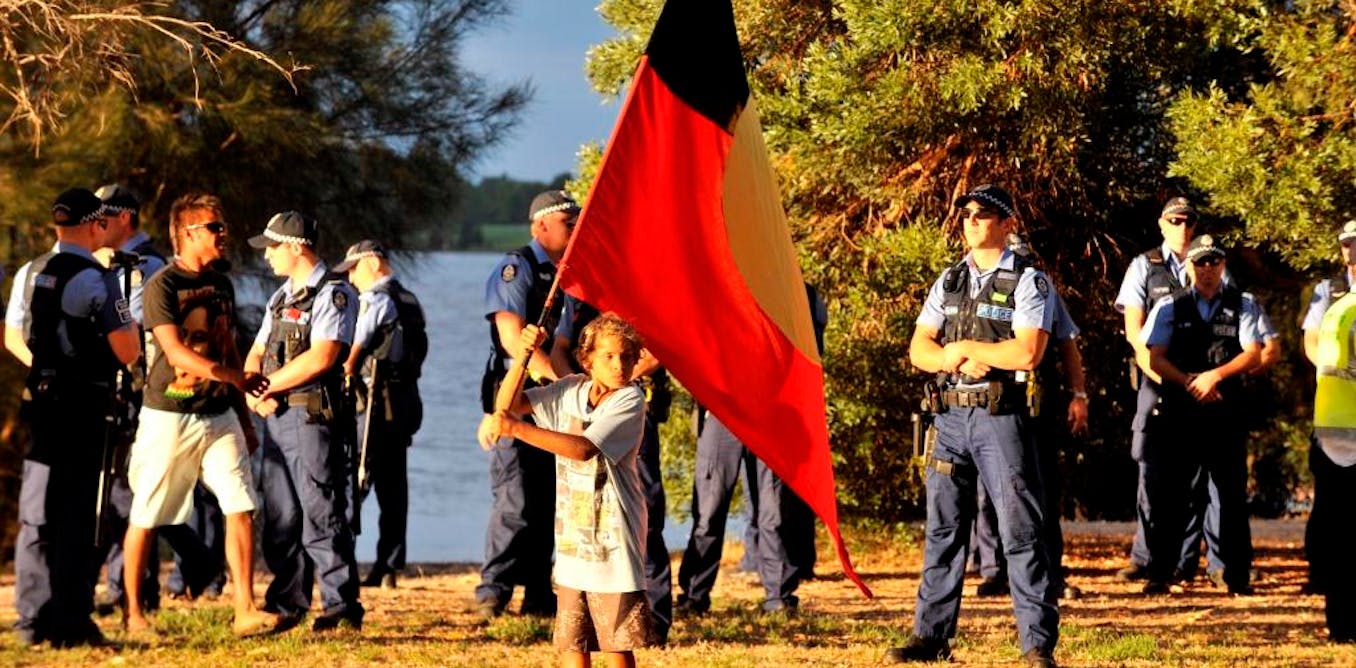Frustration rises over changes to the WA Aboriginal Heritage Act
In June, the Western Australian Government released draft amendments to the Aboriginal Heritage Act 1972. This is the legislation that determines what qualifies for heritage protection in the state – and what does not. The amendments have been met with increasing concern by Aboriginal people and scholars who see the Aboriginal Heritage Amendment Bill 2014 as a threat to the objects and sites that it claims to protect.
A review of the Aboriginal Heritage Act began in May 2011. This resulted in two rounds of public consultation. The first round focused on the government’s intention to reform the legislation and the second round concentrated on the draft amendments.
If the Bill becomes law after parliamentary debate expected later this year, the rights of people to engage with Aboriginal heritage can be ignored within government bureaucracy. Its obliviousness to Aboriginal heritage may become much more efficient.
One of the amendments authorises the chief executive officer of the Department of Aboriginal Affairs to issue a declaration that “there is no Aboriginal site on the land”. This declaration may be at “the CEO’s own initiative”. There is no administrative tribunal mechanism for reviewing the CEO’s decision.
On June 11, when the amendments were published, Aboriginal Affairs Minister Peter Collier said that the changes were needed to keep pace with rapid economic development, particularly in mining and construction. Several resource companies have expressed support for the changes.
The Law Society of Western Australia, however, has criticised the bill for not ensuring transparent reasoning of CEO determinations and for not guaranteeing Aboriginal people a voice in the decision-making process.
Indigenous voices respond
In an August 6 submission on the bill, filed during the government’s eight-week consultation period, Aboriginal MLA Ben Wyatt wrote that:
It is extraordinary that the government’s proposed amendments actually contemplate a reduced involvement for Aboriginal people than the original Act drafted in 1972.
The Bill fails to address the concerns articulated by many Aboriginal people during this consultation process.
In another submission, Aboriginal academic Blaze Kwaymullina and Aboriginal author Sally Morgan wrote that the government’s plan would “weaken a piece of legislation which is already failing to achieve the purpose of protecting Aboriginal heritage”. Indeed, the architects of the bill seem to have ignored the opinions of experts such as Professor Mick Dodson and Gary Toone of the Australian National University.
In Perth, Aboriginal community groups and land councils are up in arms.
Elders and Traditional Owners of the Swan River People native title claim group see the amendments as “a return to the days of the Chief Protector of the Native Welfare”. In a submission to government on August 5, the group said it would “be very damaging” for one person to decide “the fate of all Aboriginal people without asking what they want”.
This group and their ancestors have been struggling to protect their land and culture since the 1830s in the Perth metropolitan area. They worked hard to secure three of the six successful prosecutions under the 42-year-old Act.
The problem with weakening the Act
The Act has a poor record of protecting Aboriginal heritage. Only in rare cases has a determined group of Aboriginal people been able to use it to prevent damage to their heritage. With the proposed legislative change, even such slim hope may be lost.
Blaze Kwaymullina and Sally Morgan say that the government’s archaic approach to Aboriginal heritage “does not acknowledge Aboriginal culture as a living and ongoing concern, an approach sometimes described as ‘museum mentality’”.
Aboriginal heritage sites are places for contemporary Aboriginal politics. This was demonstrated in Perth in 2012 when an Aboriginal tent embassy was established at heritage site ID3589 on Heirisson Island to raise awareness of a state plan to radically extinguish native title to Nyoongar boodjar (country).
The Nyoongar Tent Embassy chose this location because it had been used to support Aboriginal demands in the past and because the state had recognised it as Aboriginal heritage. Despite the embassy’s engagement with state recognition of Aboriginal heritage, it was criminalised by senior politicians, bureaucrats, police and media workers.
Criminalisation worked because no official outside the Aboriginal community acknowledged that the embassy had been set up at a registered Aboriginal heritage site (see Setting up the Nyoongar Tent Embassy: A Report on Perth Media).
When asked in Budget Estimates about a series of increasingly violent police raids on the embassy, Minister for Aboriginal Affairs Peter Collier responded:
There is no provision within the Aboriginal Heritage Act 1972. (sic) to investigate the legitimacy of people who were gathered at the Tent Embassy. The Department of Aboriginal Affairs did not receive a request to provide any advice to the Western Australian Police on any aspects of the Aboriginal Heritage Act 1972.
With the Bill not yet before parliament, there is still time to prevent a carte blanche authorisation of the CEO and disempowerment of Aboriginal people.
The image illustrating this article is the cover image of the authors’ book Setting up the Nyoongar Tent Embassy: A Report on Perth Media. This photograph was taken by Allen Stewart, reproduced with permission (Newspix).

